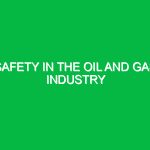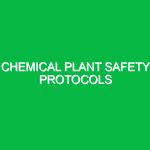In the world of construction, high-risk activities are an everyday reality. From working at great heights to handling heavy machinery, these activities pose significant threats to workers’ health and safety. Understanding these risks and implementing effective control measures is essential for any construction project. This article aims to provide a comprehensive overview of construction high-risk activities and control measures, exploring relevant hazards, safety precautions, and regulations that govern the industry.
Understanding Construction High-Risk Activities
Construction high-risk activities refer to tasks that carry a greater probability of causing accidents or injuries. These activities often involve complex operations where safety is paramount. They can include tasks such as working on scaffolding, using cranes, or performing excavation work. The relevance of identifying these activities within the Health, Safety, and Environment (HSE) domain cannot be overstated. Effective management of these high-risk activities not only protects workers but also minimizes project delays and financial losses due to accidents.
Potential Hazards and Risks Associated with Construction High-Risk Activities
When delving into the specifics of construction high-risk activities, it’s crucial to identify the various hazards that may arise. Here are some prevalent hazards and risks associated with these activities:
1. Falls from Heights
One of the most common hazards is the risk of falls. According to the Occupational Safety and Health Administration (OSHA), falls account for a significant percentage of fatalities in the construction industry. Workers may fall from rooftops, ladders, or scaffolding. Proper fall protection measures, such as harnesses and guardrails, are essential to mitigate this risk.
2. Electrical Hazards
Working near power lines or handling electrical equipment can expose workers to electrocution. This risk increases significantly during inclement weather or in poorly maintained work environments. Ensuring that all electrical installations comply with established codes and providing adequate training for workers can help reduce these hazards.
3. Struck-by Incidents
These incidents occur when workers are hit by moving vehicles, falling objects, or equipment. The construction site is often bustling with activity, making it vital to establish clear pathways and use signage to alert workers of potential dangers. Moreover, wearing appropriate personal protective equipment (PPE) can be a lifesaver.
4. Caught-in/Between Hazards
Workers may become caught in or between machinery and structures, leading to severe injuries. This risk can be mitigated through regular equipment inspections and maintaining a safe distance from moving parts.
5. Exposure to Hazardous Materials
Construction often involves the use of hazardous materials, such as asbestos, lead, or chemicals. Inadequate handling or exposure without proper PPE can have long-term health consequences. Safety Data Sheets (SDS) should be readily available, and workers must be trained in handling hazardous substances safely.
Safety Precautions and Best Practices
Implementing safety precautions and best practices is paramount when dealing with construction high-risk activities. Here are some actionable strategies to ensure worker safety:
1. Comprehensive Training Programs
One of the most effective ways to prevent accidents is through thorough training. Workers should receive training tailored to their specific tasks, focusing on recognizing hazards and understanding safe work practices. Regular refreshers can help keep safety at the forefront of their minds.
2. Use of Personal Protective Equipment (PPE)
PPE is indispensable in mitigating risks associated with construction high-risk activities. Workers should be equipped with helmets, gloves, safety boots, and eye protection, as necessary. Employers must ensure that all PPE is well-maintained and that workers know how to use it correctly.
3. Implementing Safety Protocols
Establishing clear safety protocols is essential. This includes regular safety meetings, hazard assessments, and the development of emergency response plans. Involving workers in these discussions can foster a culture of safety, encouraging them to voice concerns and suggest improvements.
4. Regular Equipment Maintenance
Machinery and equipment should undergo regular inspections and maintenance to ensure they operate safely. Keeping equipment in good condition can prevent mechanical failures that may lead to accidents. For example, a construction site I visited had a crane that malfunctioned due to a lack of maintenance, resulting in costly delays and safety breaches.
5. Monitoring and Supervision
Effective supervision can significantly reduce the risk of accidents. Supervisors should actively monitor high-risk activities and ensure that safety protocols are being followed. A hands-on approach helps identify potential hazards before they escalate into serious issues.
Regulations and Standards Governing Construction High-Risk Activities
Adhering to established regulations and standards is critical in managing construction high-risk activities. Codes of practice, such as those outlined by OSHA and the National Institute for Occupational Safety and Health (NIOSH), provide frameworks for minimizing risks. Here are some key regulatory aspects:
1. OSHA Standards
OSHA provides specific standards related to various construction activities, including scaffolding, fall protection, and electrical safety. Compliance with these standards is mandatory, and failure to adhere can result in severe penalties.
2. National Safety Council (NSC) Guidelines
The NSC promotes safety and health in the workplace through comprehensive guidelines and resources. Employers are encouraged to utilize these resources to strengthen their safety programs.
3. Local Regulations
In addition to national guidelines, local regulations may impose additional requirements tailored to specific environments or risks. It is imperative for construction companies to be aware of and comply with these local laws.
Conclusion
Construction high-risk activities are inherently dangerous, but with a robust framework of control measures, the risks can be effectively managed. By understanding the potential hazards, implementing best practices, and adhering to regulations, construction companies can create safer work environments. The commitment to health and safety not only protects workers but also enhances productivity and fosters a culture of accountability. As the industry evolves, continuing education and innovation in safety measures will be critical to keep pace with emerging risks and challenges.
In the end, safety in construction is not just about following rules; it’s about fostering a proactive safety culture that prioritizes the well-being of every individual on site. Only then can we hope to reduce accidents and create a safer future in construction.


